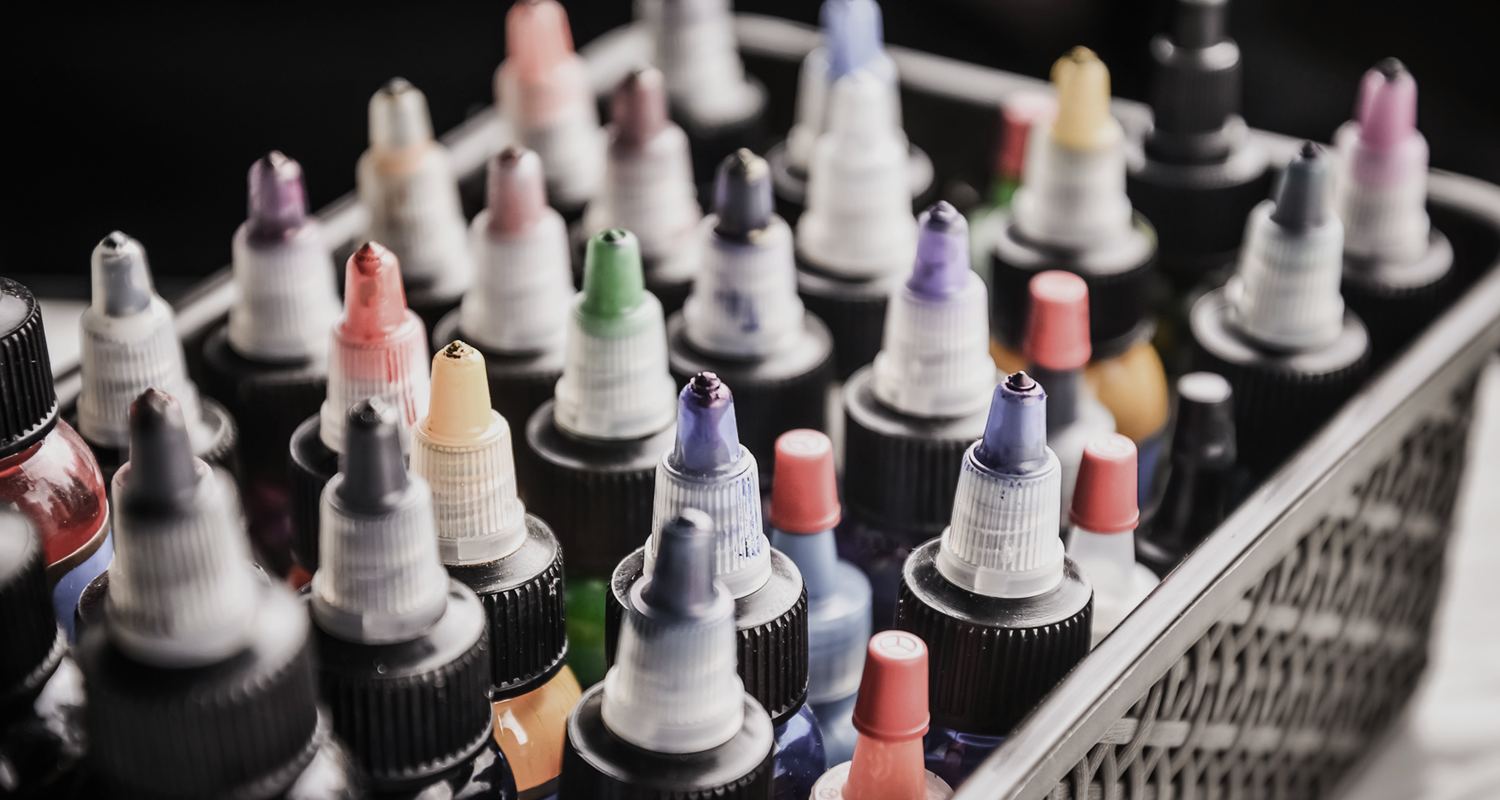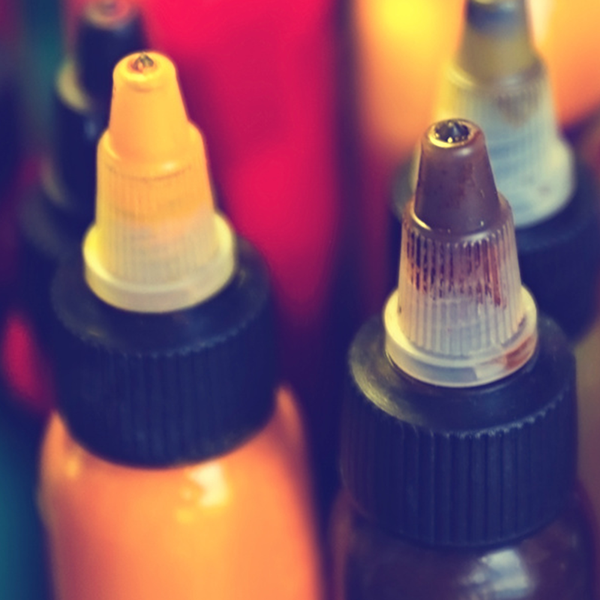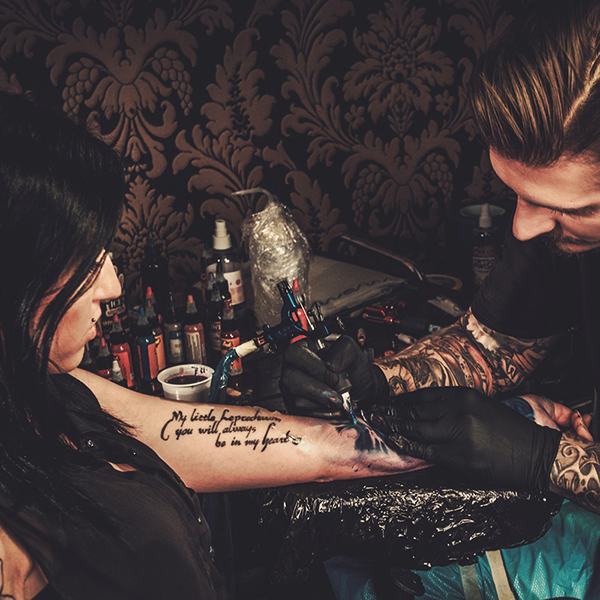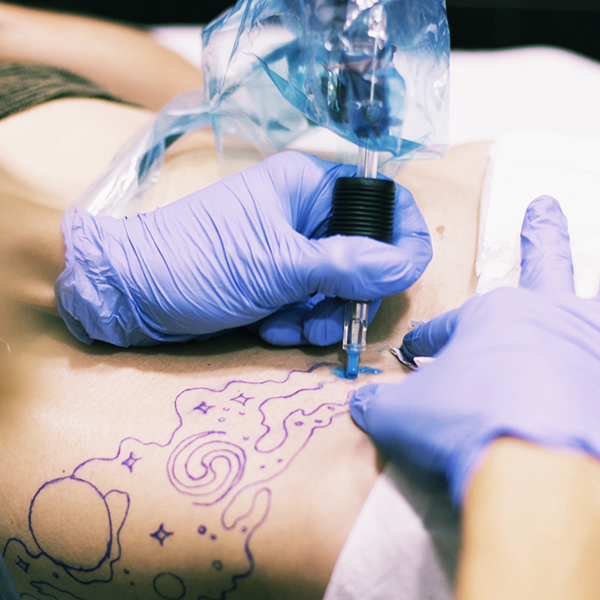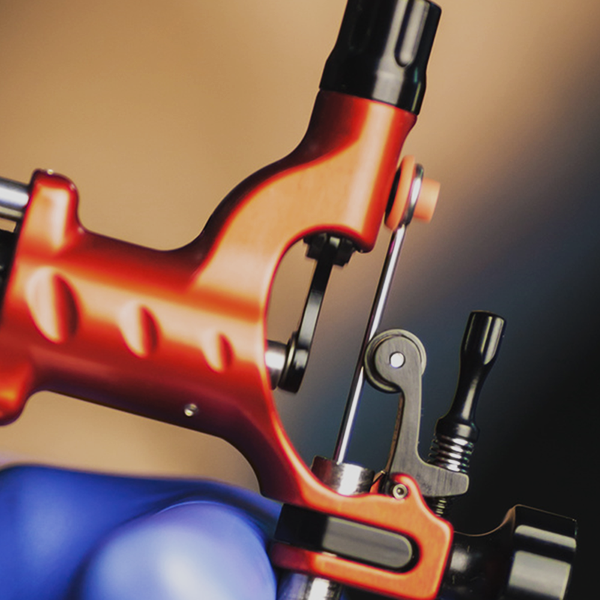It’s hard to imagine how inserting ink into the skin even came about but historians have evidence that it dates back more than 30 000 years ago with the discovery of ancient clay statues with marking running the length of their bodies. Definite proof of tattoos adorning a human body only appeared on a mummy found in 1991 that dates back 5 200 years. Small groups around the world have been discovered to have started using tattoos as a way of identifying an individual’s class, religious sect or property. They have also found that certain cultures used tattoos as a healing practice or as protection rituals.
The first pigment to be created was black. The compositions of these early inks vary a bit but most remained similar in that they used soot and charcoal as the primary pigment. Later colours arrived including red, brown and yellow. Historians believe that these first colours were made using mostly minerals along with plants and animal parts.
In order to understand how our tattoo pigments evolved over time, we must also understand the history of tattoos and what part they played in each culture.
Ancient Egypt
For the longest time scholars believed that the ancient Egyptians were the first ancient cultures to mark the skin. The discovery of a man frozen in ice in 1991on the Italian-Austrian border with 61 markings throughout his face and body proved that this wasn’t the case. Carbon dating proved that this man died more than 5200 years ago, 1000 years before the Egyptians were believed to have started tattooing their bodies. When early archeologists first discovered the mummified remains in Dier el-Bahari of women who had tattoos around their abdomen and thighs, they assumed that these women were marked as prostitutes because the lack of men with the similar markings.
Later scholars re-examined the seemly random patterns and designs and made a shocking discovery. The patterns were not random at all and because of their placement of the symbol for the God Bes (God of fertility) around the abdomen and upper thighs meant that they were obviously placed there to safe guard the woman and her unborn child from harm.
It is believed that these ancient tattoos were created using soot mixed with breastmilk and a needle attached to a wooden stick. The patterns were pricked into the skin then the ink was rubbed into the open wounds to leave a permanent mark.
Greeks and the Roman Empire
It is interesting to note that the ancient Greeks did practice some form of tattooing but I was mainly used to mark someone as a slave or a criminal contrary to the use as a protection in earlier Egyptians.
The Latin word for tattoo is ‘stigma’ which originally just meant mark or blemish but because of its association with the marking of slaves later developed negative connotations.
The practice of marking spread to the Roman soldiers, who were mainly mercenaries, to discourage them from running away. The Roman scholar and physician Aetius was among the first to record his ink recipe in his journals. His recipe called for the use of Egyptian pine bark, corroded bronze mixed with vinegar, gall nut (a type of insect larvae) and vitriol.
Tattooing remained popular all across the Roman Empire until the emergence of Christianity. To Christians tattoos were seen as a disfigurement on that which God had created and the practice dropped all across the Europe.
Celtic and Pict Warriors
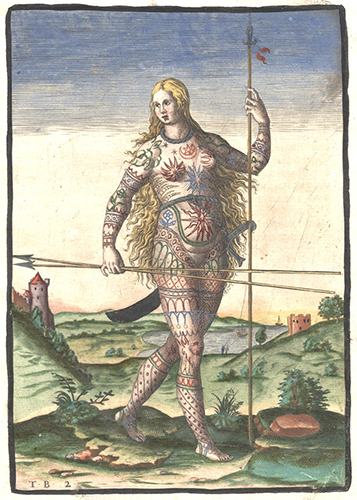
Before Christianity gained popularity, many Romans recorded the intricate decorative tattoos on Celtic and Pict warriors. They felt this practice was barbaric but couldn’t help but be impressed by the complex blue designs that often adorned the warrior’s entire body. These tattoos were meant to intimidate their opponents as they often fought bare chested or completely nude. The blue hue was made from the leaves of a flowering plant called Woad (Isatis tinctoria) that grows all throughout Europe and western Asia and was a popular form of blue dye. The leaves were picked, dried and then boiled twice to make a thick viscous paste. This paste was tapped into the skin with a needle.
Japan and the East
Japan and the rest of Asia evolved their own tattooing practices separate from the influences of the west but it’s interesting to see its similar evolution in function and techniques.
In early Japan, tattooing was used as a spiritual practice and was thought to represent status. As Japan began having greater contact with China the practice of tattooing began to be seen as barbaric and starting in 300AD the practice of tattooing became used only to identify and brand criminals.
Tattooing in Japan kept its negative connotations until the Edo period in the early 17th century where, following the development of woodblock printing, tattooing became more of a decorative art form. This decorative style of tattooing became known as Irezumi which means to insert ink. Demand for decorative tattoos reached its peak with the publication of the woodblock print book Suikoden, where the warriors were decorated with fantastical beasts and flowers all across their bodies. Demand for similar tattoos rose and previously branded criminals would often hide their penal brands under elaborate larger tattoos. Demand was so high that woodblock makers would instead become tattooist often using the same techniques as they would with the wood, such as using chisels and gouges. They would even use the same ink, known as Sumi, from Nara city. This special ink was known to turn a greenish- blue hue when inserted into the skin and has become a distinct feature of traditional Irezumi.
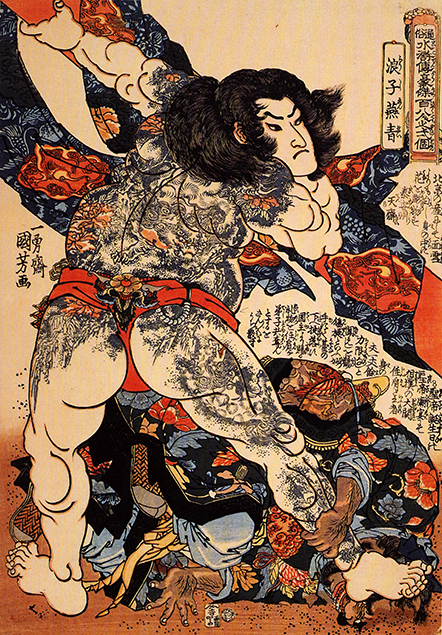
Ink from Nara was specially made from hand selected pine branches and bone glue. The branches were burned with sesame oil and the soot hand collected and kneaded with the bone glue to make dough. Fragrances were then added to this dough and small blocks were formed and dried over a period of several months to years. These blocks were then shaved and mixed with water to create the liquid ink. Many factories in Nara still create this specialty ink today.
Starting in the Meiji period (1868) tattooing became illegal. Japan was in a period of embracing the west and wanted to make a good impression. Oddly enough tattooing was not illegal for westerners wishing to get traditional Japanese tattoos and it soon became popular by sailors. The art form was seen as exotic to many foreigners and even several nobilities were recorded to have gotten tattoos including King Edward V. Even though tattoos were becoming popular amongst foreigners, irezumi began having its negative connotations amongst the Japanese due to it practice within the criminal world. The yakuza (the Japanese equivalent to the mafia) began tattooing their bodies to mark their loyalty to the group and to the lifestyle of criminals.
Tattoos were finally decriminalized during the American occupation of the country in 1948 but that didn’t stop the negative image the industry had acquired. By then tattoos were synonymous with the yakuza and nobody wanted to be affiliated with them in any way.
Sailor and Military Tattoos
When European sailors began exploring the orient, they discovered that practice of tattooing among many different tribes was whole-heartedly being practiced.
In fact our modern day work for tattoo originates from the Polynesian word tatau which was brought back to England by Captain Cook of the British Royal Navy along with the stories of the tattooed tribal members of the area.

The practice of tattooing amongst sailors soon became popular and it was an interesting past time during the long voyages at sea. Sailors would often prick designs on each other and nautical themes became the norm. Sailors would often use what was available as ink including gun-powder and sometimes urine. Anchors, swallows, fish and sharks often were displayed proudly on the men returning to shore. The Royal Navy was at the time the strongest branch of the British army and so these tattoos soon picked up popularity amongst the locals.
The Evolution of Inks
With the invention of mechanical tattoo machines, the art form gained popularity and influence. No longer was it as laborious and as painful a process to get a tattoo. The demand for brighter pigments and more lasting inks grew as well.
Before tattoo artists would mix their own inks but with this greater demand, specialty ink producers started to emerge, each one boasting that their ink was better.
Pigments were sold in powder form in jars of ½ or ¼ oz. These pigments were often lead based and the tattooist had to measure out precise amounts of Listerine and distilled water to form a liquid. Sometimes the tattoo artist would order their pigments in bulk directly from the importers with word of mouth being the only method of knowing whose pigments were safe to put under the skin. Some tattooist liked the freedom to make their own recipes for ink, thinking that they had the brightest and most lasting recipe. Tattooists would work straight out of the pigment jars as there wasn’t knowledge about the dangers of cross contamination yet.
The first pre-mixed tattoo ink first came onto the scene in 1950. Developed by the tattoo supplier Milton Zeis, he was at the helm in pushing single service procedures but the practice wasn’t completely adopted until the 1970’s.
Chemical Compositions of Inks Today
Gone are the days of lead based inks and mixing your own pigments. Instead most inks are comprised of either titanium, iron, carbon, copper or some other inorganic material.
Today there are a handful of companies that offer a large variety of pre-mixed inks specifically intended for tattoos. You can find almost any colour of the rainbow or even mix a few colours together to create your perfect shade. Ink that intended for tattoos comes pre-sterilized and can be dispensed into single use ink caps to avoid cross contamination. Pre-mixed inks aren’t really inks at all. They consist of the pigment and the carrier solution. The carrier solution is an inert fluid that keeps the pigments mixed, disinfects the pigment and provides easy application. Depending on the brand the carrier solution can be made of ethyl alcohol (ethanol), purified water, witch hazel, Listerine, glycerin or a mixture of any of the afore mentioned liquids.
Pigments can be made up of metal salts, plant or plastic based pigments, or any combination of the three.
Currently the FDA has not approved of any tattoo pigments for injection into the skin. Health Canada is another story but I will talk more on the subject in another article soon. Most tattoo ink companies see their recipes as proprietary but in an effort to make tattooing safer many well-known brands have made it their effort to only use non-toxic ingredients that contain no heavy metals or known carcinogens. Intenze Inks promotes almost complete transparency with the contents of their inks including publishing their chemical technology lab certificates which can be found directly on their website here.
Although tattoo inks are not regulated yet there are ingredients that are deemed non-toxic to look out for in the ingredients of you tattoo pigments.
Black
Non-toxic ingredients in black ink include carbon and logwood.
White
White ink that contains titanium dioxide is considered non-toxic although there is some debate about the subject.
Yellow
Look out for ingredients like cadmium yellow or chrome yellow as these are highly toxic to the body. A non-toxic alternative is turmeric based ink which is derived from a plant.
Blue
Sodium and aluminum based blue inks are considered non-toxic as well as inks that are copper based.
Green
Look for monoazo as a non-toxic ingredient in green inks.
Red
Red ink has been known to cause allergic reactions in some people and is by far considered the most toxic ink colour. Be careful of cinnabar or cadmium red pigments as these are especially toxic. Instead look for naphthol although this pigment has also been known to cause allergic reactions.
Purple
Look for purple or violet ink that contains dioxazine and carbazole as non-toxic ingredients.
Brown
Brown ink is mostly made from iron oxides and is generally considered non-toxic.
Neon colours generally are only achievable using chemicals or plastic pigments and should be avoided as much as possible.
Precautions and Safety
Every tattoo artist has their preferred brand that they like to work with. Some artists even prefer to mix their own inks. Custom mixed inks come with their own set of hazards however. There is no guarantee on the quality or ingredients of the pigments unless they are 100% organic pigments and the solution cannot be guaranteed sterile as this would require a heat source which can ruin the pigments. With pre-mixed ink the majority are guaranteed sterile but be sure to inform yourself by contacting the manufacturer.
Tattooing and tattoo ink has been part of our evolution throughout time; from the early days of soot and sticks to now, with our electric tattooing machines and variety of colours. The rise in popularity of tattoos has allowed the industry to evolve tremendously in the last few decades. Today 1 in 3 people have at least one tattoo. Measures have been put forward to make tattooing safer and continue to be improved as new studies are published. I look forward to what kinds of new inks and tattooing styles are to come in the future. The possibilities are endless.
Sources:
https://en.wikipedia.org/wiki/History_of_tattooing
http://www.tattooarchive.com/tattoo_history/pigment.html
http://www.inkdoneright.com/history-of-tattooing-rituals-and-rulers/
http://www.fda.gov/forconsumers/consumerupdates/ucm048919.htm
http://chemistry.about.com/od/colorchemistry/fl/Tattoo-Ink-Chemistry.htm

